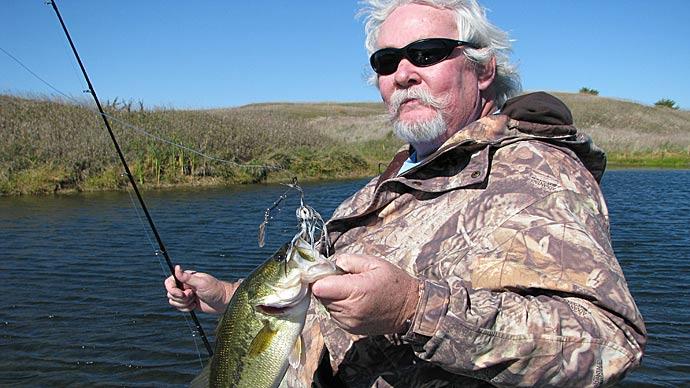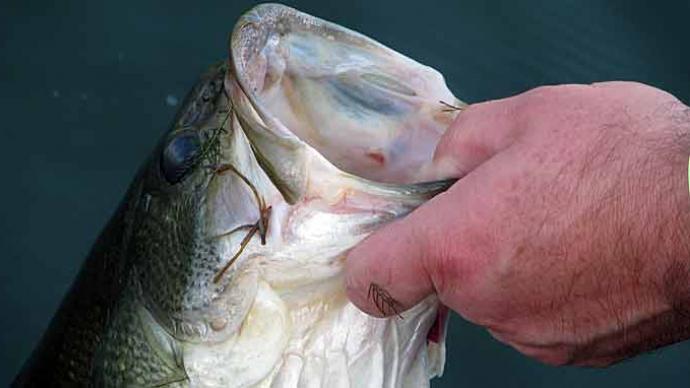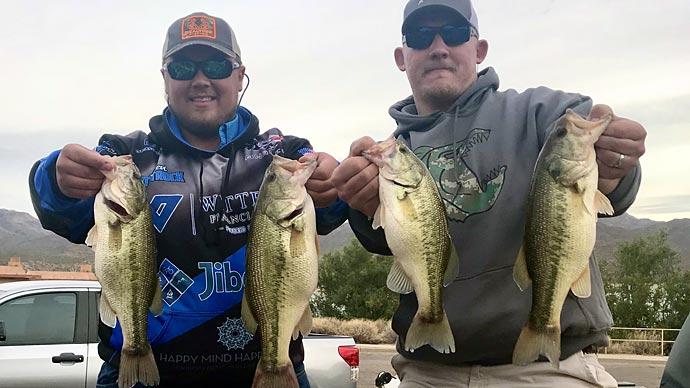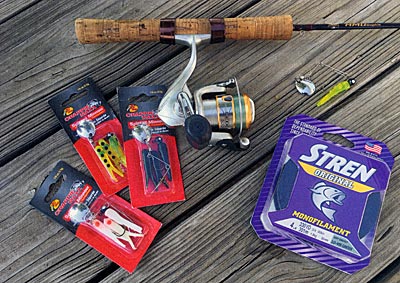
As pondmeisters, or want-to-be pondmeisters, we sometimes get overwhelmed with all of the equipment needed (we think) to effectively do our job and manage our bodies of water. There are devices to test water quality, backpack sprayers for herbicides or fertilizers, depth finders, aeration systems, seine nets, measuring boards, and accurate scales to gauge relative weights, just to name a few.
But in the Lusk/McDonald book titled, RAISING TROPHY BASS, from the Pond Boss "How-to" series, the authors ask the following: "How do you get your bass to reach that magic 16-inch length?" Their answer is short and sweet, but extremely powerful: "Specifically, you must provide plenty of small forage, while limiting competition from intermediate sized bass." In other words, in addition to all of the tools mentioned above, in order to turn your water into the lunker paradise you seek, you need to employ one other tool—harvest.
Think about that for a minute. Many of us spend a considerable amount of time and money managing our waters so that we have large numbers of bass above (and hopefully well above) that 16-inch magical length. But, once the habitat has been created, the genetics are in place, and the water is pristine, a major key to maintaining your pond's quality fishing over time is harvest.
For the three bodies of water (6.5, 1.6 & 1.5 acres) I am currently managing on family property in the southwest corner of Macoupin County, Illinois, we have shifted into maintenance harvest mode after more than two years of structure and habitat improvement, beefing up the forage base, and taking out overpopulated bass at a rate of 40 per surface acre. That equated to initially removing a touch less than 400 Largemouth in total from our three ponds. And we continue to keep every crappie we catch. But fortunately for us, crappie are only present in the biggest of our three ponds.
And, we are happy to report, our hard work is paying off! The bass relative weights are up in every pond and the bluegill forage base appears to be coming on strong. The bluegill spawned at least twice last season in all three ponds. But now, as mentioned, we are working on the next chapter in this never-ending journey since implementing our annual maintenance harvest plan starting in the spring of last year. Looking ahead, we plan to take out 15 to 20 intermediate sized bass per surface acre over the course of each season. That is typically from late-March through October in our neck of the woods. That's plenty of time if you work at a consistent pace (yes, sometimes fishing is work). Our definition of an intermediate sized bass is a fish under 14-inches in length. We are currently not harvesting any bluegill.
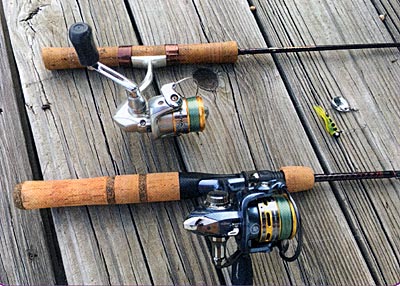
So far, we have been talking about harvest as a tool. But of course, to do that you need other tools in your arsenal to complete that basic step. These other tools consist of the tackle used to catch bass. We all have our favorite rods, reels, and lures. Mine happens to be a 6'6" fast action graphite rod equipped with a baitcasting reel spooled with 12 pound lo-viz green monofilament line. I like to fish 6-8-inch plastic worms rigged Texas-style with 1/8- or 1/16-ounce tapered slip sinkers. I need a rod with plenty of backbone to set the hook on strikes.
But, there is one big problem with my favorite bass fishing rig—the size of the plastic worm and hook cuts down on the number of intermediate sized bass I am going to catch, and so does the size of the big spinnerbaits and crankbaits that I frequently use. Now, we all know that larger lures can certainly catch aggressive intermediate sized bass. How often have you caught a 10-inch bass on a 5-inch floating stick bait for instance? Often enough would be my guess. However, when trying to add to your total of management bass harvested as you seek to reach your annual maintenance target, you need a more consistent and effective tool.
The solution? Literally every time you go to your pond, whether it is specifically to fish or for other projects, you need to bring a rod and reel combination along that will allow you to effectively cast 1/8-ounce lures that will help you catch more intermediate sized bass. Quite simply, you can catch more intermediate sized bass on smaller lures. Optimally, this rod will always be kept at the ready in your vehicle, or at least in a very convenient spot, so you can grab it on your way out the door when headed to the pond. You need to make at least a few casts, even from shore, every time you work around or visit your pond.
And, if you are going fishing for the day, be sure to cast some smaller lures along with your regular favorites. Consistently doing this will get you far down the road in terms of your harvest goals.
What is the proper tool for this job? Here I have a favorite as well. I highly recommend a soft-to-medium-action 4/4 foot spinning rod with a reel that will hold no more than 100 yards of 4 pound lo-viz green monofilament line.
And don't set the drag too tight. Why such an ultralight rig? Purely for the fun of catching 1-lb. management bass on light tackle using small lures, especially spinnerbaits. And every now and then, when something larger inhales your 1/8-ounce spinner, you will have a great fight on your hands, one that requires a bit of finesse given your equipment. Using this setup, you will also have good success evaluating the condition of your bluegill forage base, as well as harvesting crappie. And, when buying this rod and reel combination, don't skimp. With fishing equipment, just like most other things you buy, you get what you pay for. A quality rod combined with a quality reel that has a smooth drag might cost you upwards of $120 to $140, but you will be thanking yourself every time you hook a fish that is running hard and taking line off your spool.
Reprinted with permission from Pond Boss Magazine

